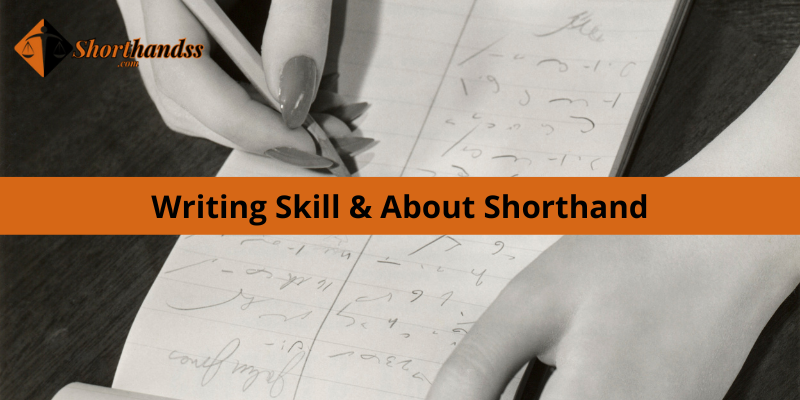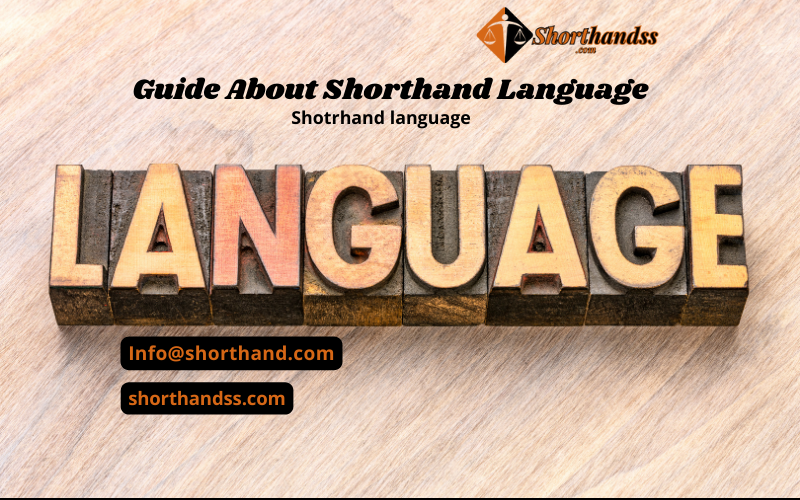What is Shorthand
The quickest system of writing is called “Shorthand“. It is a phonetic system and it is the art of representing spoken sound by written signs and used for dictations. The main purpose of Short Hand is to be able to write approximately as fast as someone speaks, to take down everything that is said. Short Hand is a symbolic method that increases the speed and brevity of writing as compared to longhand. There are many types of Short Hand. The most popular system are Pitman, Gregg, and Speed writing. Pitman is the latest and most popular system of Shorthand writing in the world.
Invention: Isaac Pitman first time in history introduced shorthand. He belong to Landon and he first published his first edition in the year 1837. Sir Isaac Pitman is also known as the father/founder of English Short Hand. He spent half a century improving it, and the great work has since been continued by several generations of expert writers and teachers. Isaac Pitman devised his system after a profound and epoch-making study of the phonetic structure of the English language. The System is a result of his scientific analysis.
Writing Skill & About Shorthand
Writing Skill: In Pitman’s Short Hand speed and facility of writing and safety of reading are achieved by following a coherent and comprehensive scheme. each sound has its sign, and sounds of the same family have signs with an appropriate family likeness, So, after a little proactive the signs seem to produce themselves like snapshots from the sounds, and the sound themselves seem to speak from the written page. In Short Hand, the normal speed of writing is 70 to 80 words per minute. But people who practice daily and work hard increase their speed up to 100 words per minute. Shorthand is also used for recording spoken English in Parliaments, congresses, Courts of Justice, and offices of every size and sort, There is pitman’s shorthand, doing what no machine can do.
About Shorthand: Shorthand is a sound base language. In which we write only sounds. Shorthand is made of sound. The alphabet of Short Hand is Called Consonants. There are 24 Consonants in Shorthand. Consonants are also called Strokes or Outline. The second thing in Short Hand is Vowels. We know there are 5 vowels in English. But the number of Shorthand consecutive vowels is 12. The third thing in Short Hand is Diphthongs. It’s also known as additional vowels. When two consecutive vowels join make one additional vowel. The total Short Hand system is made of the above three basic things. For every sound you listen to, Shorthand will provide you sign for this any Stroke, vowel, or additional vowel.

Feature & Paring of Strokes
Feature of Shorthand: Pitman Short Hand Book presents the principles of the Shorthand in a logical arrangement. Shorthand rules are explained briefly and simply, with proper examples. The effort of teachers makes it much easier by dividing the principles into small units of construction for students. The book provided a wealth of drill material for each unit of instructions. The amount of material is more than any previous Short hand book. In some cases, two different words produce the same sound. The exercise of this book is fully related to the topic and makes it easy for students. These exercises will provide great reading and writing skills to the learner. Two thousand words are available in the vocabulary of principles. Most of the exercises are in Shorthand. Which provides valuable knowledge to the learner and makes it easy to convert into writing form.
Paring of Strokes: In some cases, strokes are paired because of their similarity of sound. Sometimes we change the direction of the stoke due to its awkward shape. The first stroke in the pair speaks lightly “S” and the second stroke in the pair speaks with a heavy sound “Z”. The same strokes are used for both consonants, but the first consonant is written with light strokes and the second consonant is written with heavy strokes. This process avoids the necessity of employing different strokes to represent similarly sounded consonants. Pitman’s Shorthand book is easy than other books because it’s so simple.

Elimination of Vowels & Position Writing
Elimination of Vowels: In Pitman’s shorthand, the Words are represented by a complete shorthand outline of their strokes. Short forms make it easier for leaner. Circles, loops, and hooks are used for the representation of frequently occurring and natural combinations of strokes in English words. The vowel signs indicate the sounds of the words. Shorthand writers save much time and Labour. In some cases, disjoining strokes provide us with lots of new words. Phrasing is very important in shorthand because it will provide us with a lot of writing speed. Shorthand is a very easy art because it saves lots of time.
Position Writing: Position Writing is a simple and effective method for the indication of vowels. Writing a first stroke of the word above, on or through the line, according to its first vowel sound. In Short Hand Stroke above the line show the first vowel in the word is the first place vowel. If the stoke on the line shows the first vowel is a second-place vowel and the stroke through the line shows the first vowel is a third-place vowel. Short Hand produces the best writer and workers for fast writing. In Pitman’s Shorthand, the number of real writing is minimum because of the scientific use of stenographic materials. So Shorthand produces us great art of writing.
For Shorthand-related Jobs:-

